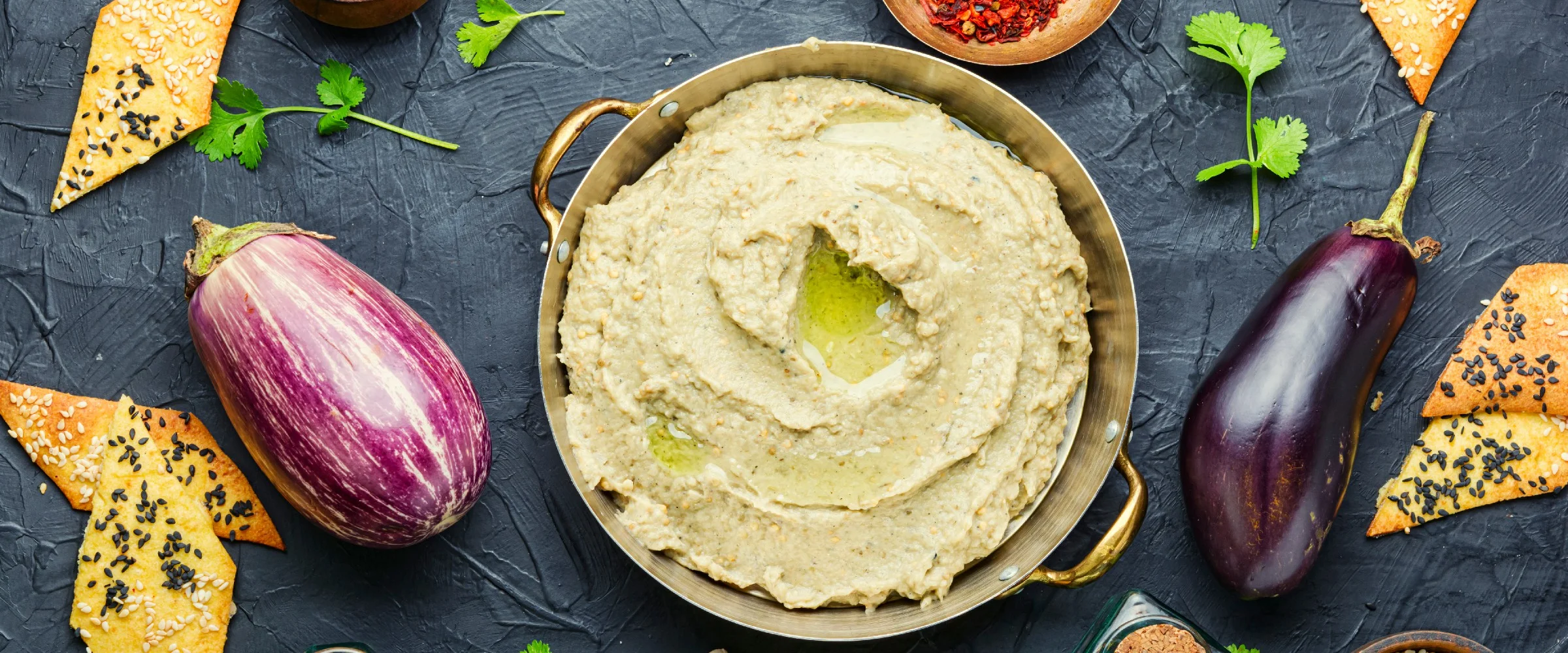
Aubergines are a rather divisive vegetable: either you love them and lick your fingers after a good home-made aubergine cream, or you can't even look at the otherwise very showy and beautifully coloured vegetable. Why eat aubergines and how do you make homemade aubergine cream?
The thousand faces of aubergines
The name aubergine comes from the Arabic word badinjan. There are many variants of the name, such as eggplant, Turkish tomato, blue tomato, vine tomato. It has been cultivated in Southeast Asia for thousands of years and many forms are still used in this region.
It was grown in Europe in the Middle Ages, in Spain to be precise, and conquered the rest of the continent in the 15th century. It was introduced to Hungary by the Turks. Although the purple fruit is the most common in this country, there are also white, yellow and black varieties.
When choosing aubergines, make sure that the colour is dark purple, neither too light nor too dark, and it is not a good sign if it is pale. The skin of a healthy and fresh vegetable is smooth and shiny. It will generally keep in the fridge for a week, but Italians, for example, soak it in olive oil with garlic and basil for a month and a half, after marinating it in lemon juice and honey.
China and India produce the most aubergines in the world, while Italy and Spain are the leading producers in Europe. It is a staple in many dishes, especially in the southern, Balkan and Mediterranean regions. The Greeks use it to make musaka, the French ratatouille, the Serbs ajvar and the Catalans escalivada.
Many houses, many recipes
Eggplant cream is a traditional dish in many nations, but each one is slightly different. They use different spices, the ingredients are slightly different and the flavours take you to different regions.
The aubergine cream recipe
Homemade aubergine cream is fairly simple to make and once the vegetable is cooked, it can be prepared in a matter of moments. Let's go through the preparation step by step!
Ingredients
1 eggplant
1 head of red onion
a few cloves of garlic, to taste
olive oil
vinegar or lemon juice
salt and pepper
In addition to these, you can add a variety of other flavourings such as mustard, parsley mayonnaise, dried tomatoes, Greek yoghurt and anything else that suits your taste buds.
Preparation
The first step is to roast the aubergines. Ideally, you can cook it on an open fire on the grill, but if that's not an option, the oven is still an option. Prick the aubergines so that the steam generated by the heat can escape easily, then place them in a preheated oven at 170 degrees and roast for 1 hour.
After roasting, cool, remove the skin and scoop out the flesh. It's essential not to use the seeds, throw them in the bin instead! Cut them so small that they are almost pulpy. Finely chop the onion and garlic, then mix with the smoky-smelling aubergine.
After that, there's nothing left to do but season! Salt, pepper, olive oil and lemon juice are added to the aubergines and onions, in whatever quantity suits your taste. To allow the flavours to blend properly, it is best to refrigerate for at least 1 hour before serving.
Eggplant cream is a classic and is best served as a dip, spread on bread. At Kiosk, the traditional recipe is made crazy with a touch of pomegranate, which adds a freshness that perfectly complements the smoky flavours of the aubergine.
Try it yourself and indulge in the gastronomy, a reimagined temptation of traditional flavours.